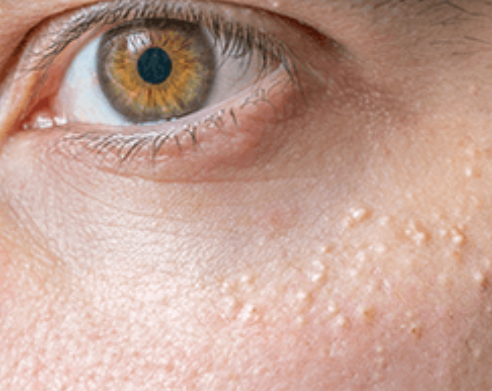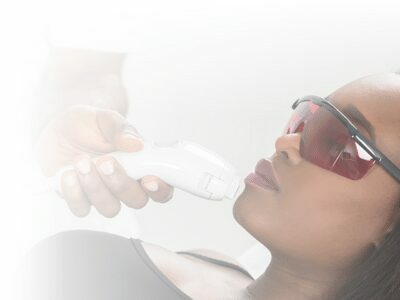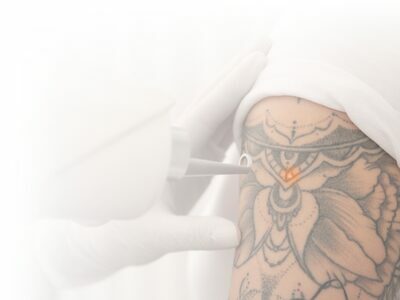Administered by a Qualified Doctor or Nurse
Procedure follows strict medical protocols
Performed in a safe and medical environment
Flexible appointments including evenings & weekends
Pricing
To secure an appointment, your credit or debit card details will be secured against your booking. For free consultations, this is £25 with a practitioner or £50 for acne or injectables consultations. For all other chargeable consultations, appointments, test patches and reviews, please refer to our payment protection and cancellation policies for more information.
| Doctor consultations from |
£185.00
|
| Treatment | Single Treatment From | |
| Up to 5 milium | £85.00 |
£85.00
|
| Up to 10 milium | £127.00 |
£127.00
|
| Up to 20 milium | £194.00 |
£194.00
|
| Over 20 milium | £261.00 |
£261.00
|
The sk:n promise
Our mission to deliver confidence through better skin is at the heart of everything we do. Our promise to you:
- Award-winning, unrivalled medical expertise. No one has more consultants, doctors and clinical expertise than sk:n, so no other dermatology provider comes close.
- Outstanding approach to client care for over 30 years. We’ve consistently delivered unrivalled, personalised client care, that’s always right for our clients. If you have a concern, you can trust us to solve it.
- Standards you can trust. Our market-leading medical, safety and training protocols and strict industry regulation means you can trust that your safety and care is our priority.
- We are the UK’s leading skin clinics. We’ve treated millions of clients, improving their self-confidence for the better – with some life-changing results.
Request a callback
One of our friendly sk:n advisors will call you to book your consultation.
- More than 450 consultants, doctors, nurses and medical practitioners
- Regulated by the Care Quality Commission, Health Inspectorate Wales and Health Improvement Scotland
- Partner of the NHS
- Rated excellent by our clients on Trustpilot
- Strict safety and care protocols

What do Milia look like?
Milia are usually very small, white or flesh-coloured bumps which are firm to the touch. They have a different appearance to a pimple or spot as they don’t have a head and cannot be squeezed. They are generally not red or inflamed (except for milia en plaque) and should not feel uncomfortable or painful. They usually appear on the skin around the eyes in groups, but it is possible to have just one milium at a time and they can occur on any part of the body, including the groin and genital area.

Our Expert Commentary
“What people think is milia, is not always milia.” – Dr Hosur
Medical Director at sk:n, Dr Achuth Hosur, suggests conditions that appear to resemble the characteristics of milia may actually be other skin conditions. Therefore it is important to be properly, medically diagnosed if you believe you have milia, as the treatments, outcomes and complications will vary. If a doctor determines that you do have milia, the treatment and recovery process is usually simple and effective. We will individually assess the condition and advise the appropriate treatment for you.
Frequently asked questions
Can I remove milia myself?
Removing milia yourself is not recommended. To avoid infection, the treatment should be carried out in a safe clinical environment with sterile equipment. Trying to squeeze or pick at milia can cause the area to become inflamed, bruised or infected because they do not ‘pop’ in the same way as a pimple or whitehead.
How can I reduce the white spots under my eyes?
Ensure you have a good skincare routine can help reduce white spots under your eyes, which should involve good quality products, regular exfoliation and wearing high factor sun protection.
What are the different types of milia?
There are five main types of milia:
Neonatal milia: Neonatal milia or ‘milk spots’ are milia found on newborn babies. It is thought they are caused by sweat glands that haven’t fully developed yet and so become blocked easily.
Primary milia: Primary milia can appear on children or adults. They can disappear without treatment, but tend to last longer in adults and can often be permanent.
Secondary milia: These occur after injury or trauma to the skin. It is thought that this is due to damage caused to the sweat glands in the affected area, and can also be as a result of using certain types of creams.
Milia en plaque: This is a rarer type of milia that develops on a raised and inflamed patch of skin called a ‘plaque’.
Multiple eruptive milia: This is another rare type of milia that occurs when clusters appear over the course of a few weeks or months, and most commonly appear on the face, upper arms and the upper half of the torso.
Is milia removal safe?
Going to a regulated and qualified doctor is the best way to remove milia safely and effectively. All of our milia removal procedures are carried out in highly clinical, sterilised operating rooms by doctors with many years’ experience. They will follow strict medical protocols, which means you can be rest assured that the procedures are very safe.
Does milia removal hurt?
The removal of milia is virtually painless and there is no need to apply a numbing cream before the procedure.
Is there any downtime after milia removal?
There may be some slight redness to the treated area immediately following the milia removal procedure, however this subsides within a matter of hours and benefits of treatment can be noticed instantly.
Can skincare products cause or worsen white spots under the eyes?
If you do have Milia particularly around the eye area, it could be something to do with the skincare products you are using. The skin around the eye is much thinner than on the face, so when eye creams are thick and heavy they can block pored and trap dead skin cells. So make sure you invest in a good quality, light eye cream. Another cause could be sun damage or an allergic reaction to harsh facial products.
Can I wear makeup if I have milia?
You may feel like you want to cover up the white spots with makeup. However covering Milia with heavy makeup will stop your skin from shedding cells and may clog pores further, trapping keratin underneath your skin. Try to use breathable makeup, or instead of a foundation use light powder-based cover up.
Can milia be removed from around the eyes?
Removing milia from around the eyes yourself can be dangerous and should only be carried out by a doctor.
Does milia removal leave scars or marks?
Milia removal should not leave any scars or marks.
Is milia removal safe?
Going to a regulated and qualified doctor is the best way to remove milia safely and effectively. All of our milia removal procedures are carried out in highly clinical, sterilised operating rooms by doctors with many years’ experience. They will follow strict medical protocols, which means you can be rest assured that the procedures are very safe.
What natural/at-home remedies for milia are there?
Milia will usually go away naturally on their own, but in some cases they can take months or even years to disappear.
Regular exfoliation with a good exfoliating product and thorough removal of makeup before bed can help to prevent milia recurring, but will not remove existing milia. At sk:n we recommend to have milia removed in a safe, clinical environment.
What to do after milia removal?
After your milia removal your practitioner will provide you with full aftercare instructions. There may be some slight redness to the treated area immediately following the milia removal procedure, however this subsides within a matter of hours and benefits of treatment can be noticed instantly.
What to do before a milia removal treatment?
It’s likely you’ll be advised at your consultation to prepare your skin before your treatment by using a non-abrasive exfoliating cleanser and vitamin A product on a regular basis. These products will soften the skin that covers the milia, making it easier to remove and can also help prevent further milia developing.
Will milia fade without treatment?
This could be the case, with adults this could take a few months. However it is always best to get any skin conditions checked out by a trained professional. Definitely do not try any treatments at home or you could cause infection or scarring.
Where to go for milia removal?
It is important that you visit a private clinic such as sk:n where your milia can be removed professionally and safely.



